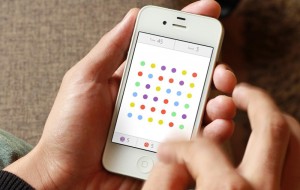
I’ve advocated for educators to use social to connect, for learning, for quite some time. I do this even when my pleas have fallen on less-than-enthused ears, or when someone can’t quite comprehend the scope of how being a “connected educator” has changed who I am as a teacher, and as a leader, a thinker, a creator.
I know for sure that it has fundamentally changed me as a learner.
I’m currently teaching a graduate-level technology & communications course for aspiring principals, and networks & communities & PLNs & all the rest are part of our course explorations. My students are really stepping it up in terms of their blogging game. Would love for you to take a look and comment if you have the opportunity! We recently reflected on Dean Shareski’s ideas around sharing and our Moral Imperative to do so as educators. See blogs by
Taylor, Steven, Laurie, Bernadette, and Ralph
So, yes, I feel good sharing about sharing. About making sure the educators I work and learn with can connect with others to develop supportive circles of friends and resource knowledge bases and be in touch with the latest and greatest in the world of education and educational technology and leadership.
But, you know, as much as social used to be a space where we went for inspiration, for support, and for meaningful conversations filled with constructive feedback, it’s kind of morphed into a space where I get a really icky feeling every time I’m there.
Last night I chatted with Jeff Bradbury and Sam Patterson on the Tech Educator podcast, and we talked about connected educators and learning with social and how the spaces have evolved so much since the beginning, both in good ways (many more educators participating, new tools to help us connect in different ways) and in bad ways (tendencies to stay in our bubbles, algorithms taking command of who we interact with and how, not amplifying marginalized voices, a constant stream of noise and promotion). The time spent recording our thoughts was not nearly enough to delve into all that is good and all that is broken in the world of social learning.
I don’t know if it’s the medium, or the message, or the heightened state of anxiety that exists among teachers and leaders and humans in general, but I may in fact start to steer teachers clear of open social spaces if they’re looking for genuine engagement and discourse.

I love a well-constructed, respectful conversation on Twitter. I enjoy people who post things that make me go, “Huh. I didn’t think about that perspective before.” Or, “Oh. That thing I just shared absolutely amplifies my privilege and maybe I need to think twice about what I say, how I say it, and whose voices I’m sharing.” In our quest to move Beyond the Buzzwords with our Modern Learners work, I do insert myself into chats such as #satchat pretty regularly and try to offer questions and comments that push the boundaries of what people are generally posting and thinking about some topics around “educational innovation.” But I always try to do that from a place of deep respect for the educators in this space and a genuine interest in moving the conversation forward.
There are people who enjoy sharing platitudes and pick-me-up statements via social, and I am not one of those people. There are people who love personally attacking other users, or amplifying their work just to smear it, and I hope I am not one of those people, either.
But I get why it happens.
They’ve had enough. They’ve seen enough. The levels of frustration they experience when they’re told what “good teachers” do or what “everyone” should try are beyond measure. They’re exhausted. They feel like they’re not being heard. They feel attacked.
And so what’s lacking in these spaces, and in leadership circles in general, is our inability or unwillingness to seek first to understand.
Seek to understand.
Before tweeting, before posting, before sharing…. read once. Read again. Do some background fact-checking and learn more about the person behind the account, or think about the message you wish to share and examine it from all possible angles. Where does the privilege lie? Where does the motivation come from? How might someone who isn’t in your position/race/class view this information? How can your subsequent interactions with users and content create a more robust learning space for people who are engaged? How can you amplify messages and voices that push us to be better? Better thinkers, better learners, better people?
There are alternatives to learning in open social, and more and more educators are gravitating to more clearly defined spaces that better support deep conversations around teaching and learning. They’re joining together as tribes of people who are committed to a movement. These types of communities are moderated, have clearly established norms, and they’re sometimes behind a paywall or require a subscription. But I think what people are beginning to realize is that there is incredible value in such a space, and the cost is minimal in the grand scheme of what is added to their learning, plus the fact that the platforms being used are algorithm and noise-pollution-free.
Our space is ChangeLeaders Community, and we’re growing, and it’s exciting. We need more voices, though –your voice. We need more diverse representations of leaders and learners and we hope you will consider joining us, for the betterment of the entire community.
I don’t tweet as often as I used to, and I certainly don’t blog with the regularity of my early blogging years, but these spaces are still such an important part of who I am as a learner and leader. Every day I find meaning in the interactions. I want us to commit to making these spaces the height of what we try to create
More to Explore/See/Do:
- Read Privilege, Power, and Platitudes by Shana V. White and reflect on your own practice as I continue to try to do.
- I’m excited about A More Civil Discourse. Bud Hunt recently shared this venture and I think I’m going to start with Episode 2: Antero & the Trolls.
- We’re taking Modern Learners on the road! Join us in Chicago on July 10 (right before the NASSP conference) for Leading Schools that Learn: Building Culture Through Inquiry & Agency. Seats are limited! Gets yours soon!
Photo by Harli Marten on Unsplash






